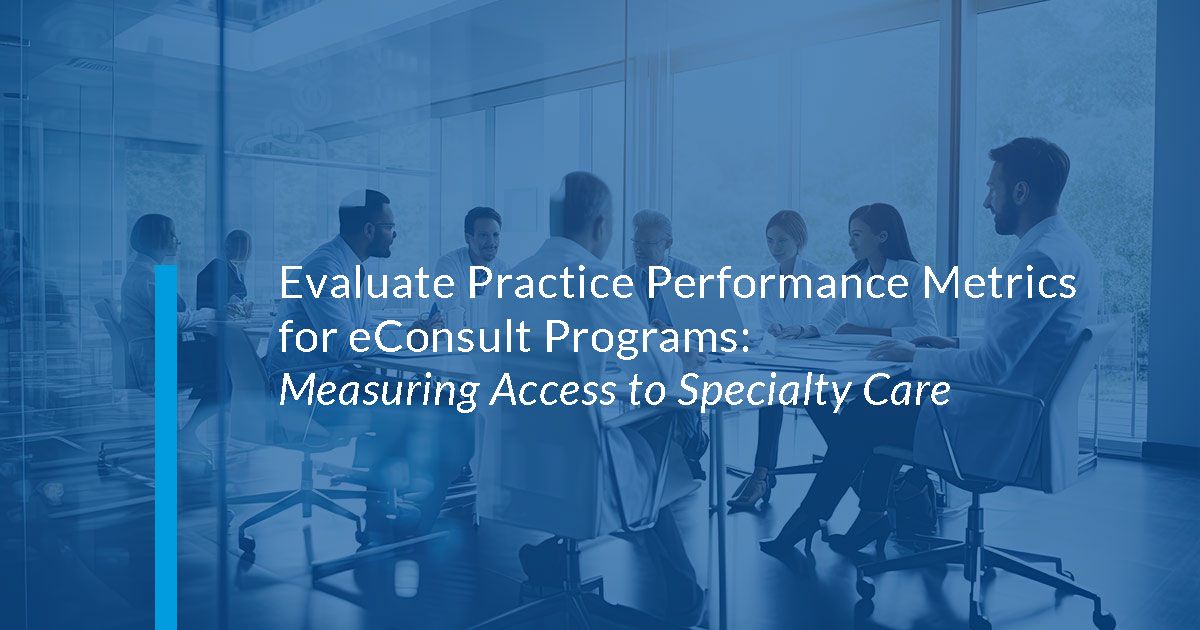Providing Access to Pediatric Specialty Expertise by Extending eConsult Offerings to Internal and External Requesting Providers
Primary Care eConsult Overview
Patricia Hanrahan, Sr. Product Manager, Virtual Care at Boston Children’s Hospital
To dive more into the primary care model and what that looks like. This follows a pretty standard e-consult workflow but can call out some of the nuances that we’ve put in place. So for our primary care E-consult workflow, it starts with a primary care provider submitting a question. Um, and those should be some low acuity, uh, questions that are not urgent. They can select the specialty as well as condition, um, and submit their question with some of the suggestions from a specialist on what to include based on that condition. Um, and the developed workup checklist, so the PCP submits that, it usually takes them about 15 minutes or less, and then that goes to the Boston Children’s specialist that reviews the question and provides their treatment recommendation back. Since these are low acuity cases, the SLA we have in place for our program is a three business day SLA, and it typically takes specialists five to 10 minutes to review these and respond once they respond, the PCP reviews those recommendations and then can triage care with their patient appropriately. Based on our current participating specialties, we still have eight live consulting specialties today, and then across the requesting provider sites, we have just over a hundred requesting sites, leveraging all Arista, but in different ways, as you saw how we’re using the technology. And then our virtual care team at Boston Children’s leads the implementation, but in partnership with Arista to provide the technology as well as some of the technology support is needed.

Evaluate Practice Performance Metrics for eConsult Programs:
Measuring Patient Access to Specialty Care
With considerable time and effort, at-risk practices identify patients at high risk of serious health events. We want to use this same information to develop an eConsult strategy.
- ED use – a costly alternative to a specialist visit.
- Unscheduled or canceled specialty care appointments.
- Boomerang appointments to primary care.
Increasing access to specialty care is the goal. Together, we can track and communicate which specialties are most:
- Needed by the patients you serve
- Likely to improve outcomes
- Appropriate for eConsult
- Valuable to your practice
Identify Specialties with Long Appointment Wait Times
There are many reasons why patients must wait too long to get an appointment with a specialist.
- Not all specialists accept Medicare and Medicaid.
- Doctors in many specialty areas are unevenly distributed across the country.
- Patient referrals are often scheduled by the urgency of the condition.
- Current patients are prioritized for appointments.
Merritt Hawkins reports that the nationwide average wait time to see an orthopedic surgeon is relatively short – just 16.9 days. However, looking at the average can be misleading.
- This average is a 48% increase when compared to 2017
- Getting an appointment with an orthopedist varies tremendously by location – San Diego averages 55 days!
Several factors impact appointment wait times. Not all specialists accept Medicare and Medicaid. Specialists are often clustered in metropolitan areas and unevenly distributed across the county.
Patient’s are less likely to schedule and attend a specialist appointment:
- When the wait time is extended.
- Travel distance to the specialist is significant.
- Cost of the appointment is high — the patient has high-deductible insurance, or the specialist is out-of-network.
